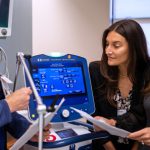 Every year, more than 44,000 Americans take their own lives, and suicide is the second-leading cause of death in adolescents between the ages of 15 to 24.
Every year, more than 44,000 Americans take their own lives, and suicide is the second-leading cause of death in adolescents between the ages of 15 to 24.
These alarming numbers beg for better identification of patients at risk for suicide to ensure they get the care they need, when they need it. That’s why two UPMC doctors – Dr. David Brent and Dr. Neal Ryan – and one University of Pittsburgh professor, Dr. Fuchiang (Rich) Tsui, are leading a project to better track patients at risk for suicide through the electronic health record (EHR).
“In many cases, the last clinical contact a suicide victim sees is a primary care physician or someone in the emergency room, not a mental health professional,” Brent said. “This project is working to change that.”
Using Brent’s background in child psychology, epidemiology and suicide prevention, Ryan’s experience in child psychology, and Tsui’s expertise in data science, the group set out to develop EHR algorithms to track patient patterns and flag those at high risk of suicide.
The algorithms combine diagnostic, machine learning and natural language processing information to analyze all relevant information about a patient, automating the process of analyzing records and searching for signs of suicide that often go undetected by humans. Patients at risk for suicide and suicidal behavior will be identified and their chart flagged so psychiatric professionals can provide the help patient needs.
“Our initial efforts will look just within the electronic medical records of the clinical sites involved in the study at UPMC,” Ryan said. “Once the algorithm is solidified at UPMC, we are hoping to expand it to other health systems and adapt the algorithms to fit their electronic health records.”
To help develop and expand the system, the research team was awarded a Bench to Bedside grant from The Beckwith Institute in June 2017. The program supports research that translates directly to patient care.
“As a data scientist, I am excited by this project that has developed a predictive system that automatically identifies relevant risk factors from potentially tens of thousands of clinical findings and computes a patient’s suicide risk accordingly,” Tsui said.
As the project expands across different health systems, the algorithms will need to be able to read all the data languages the various hospitals employ. After the system is up and running, it will need training every few years to update the algorithms.
“This project is a low-cost, low-risk method to yield better patient care,” Brent said. “This is an extra resource to guide physician decision making and referrals, which ultimately uses this predictive data approach to save lives.”








